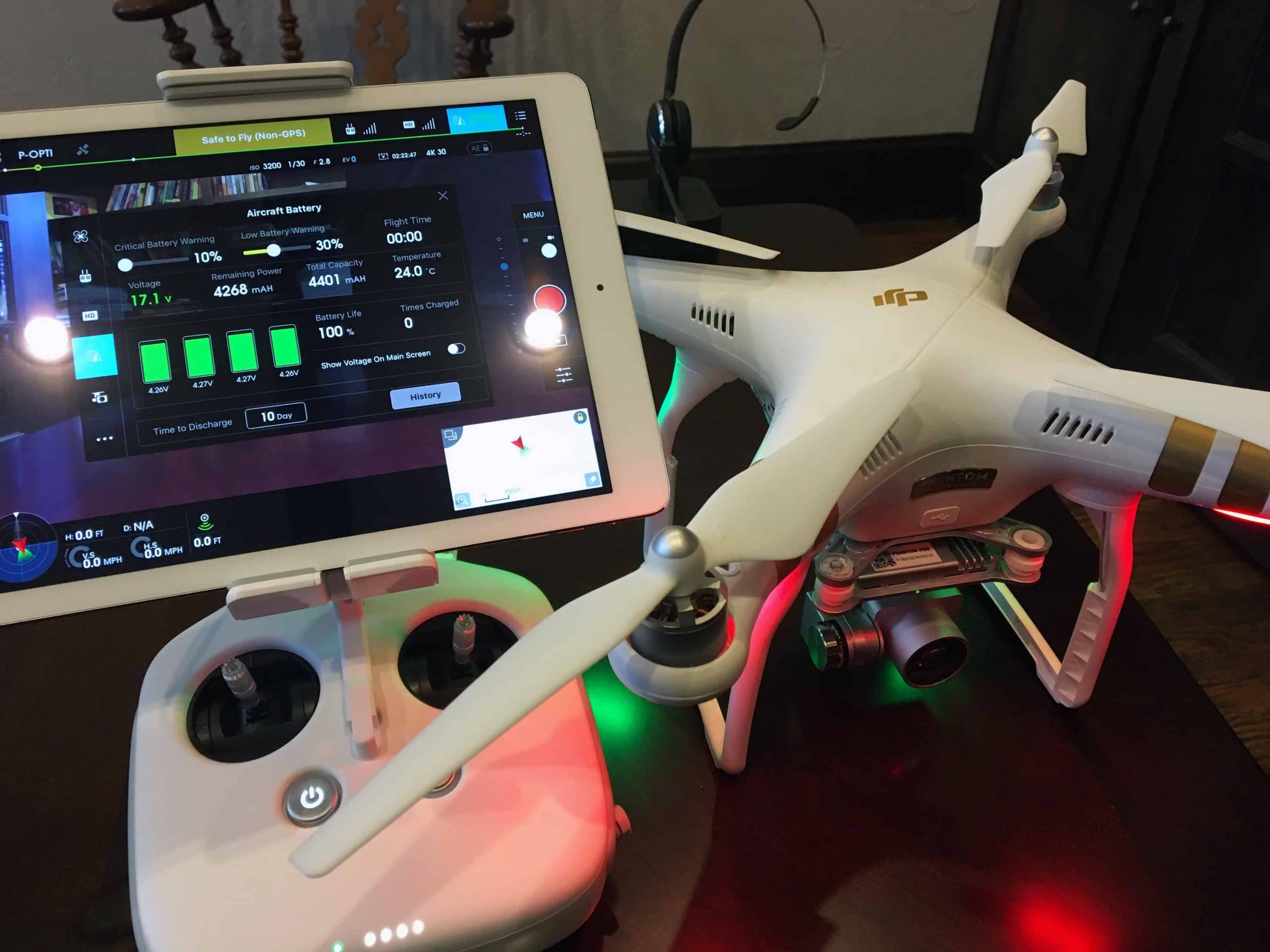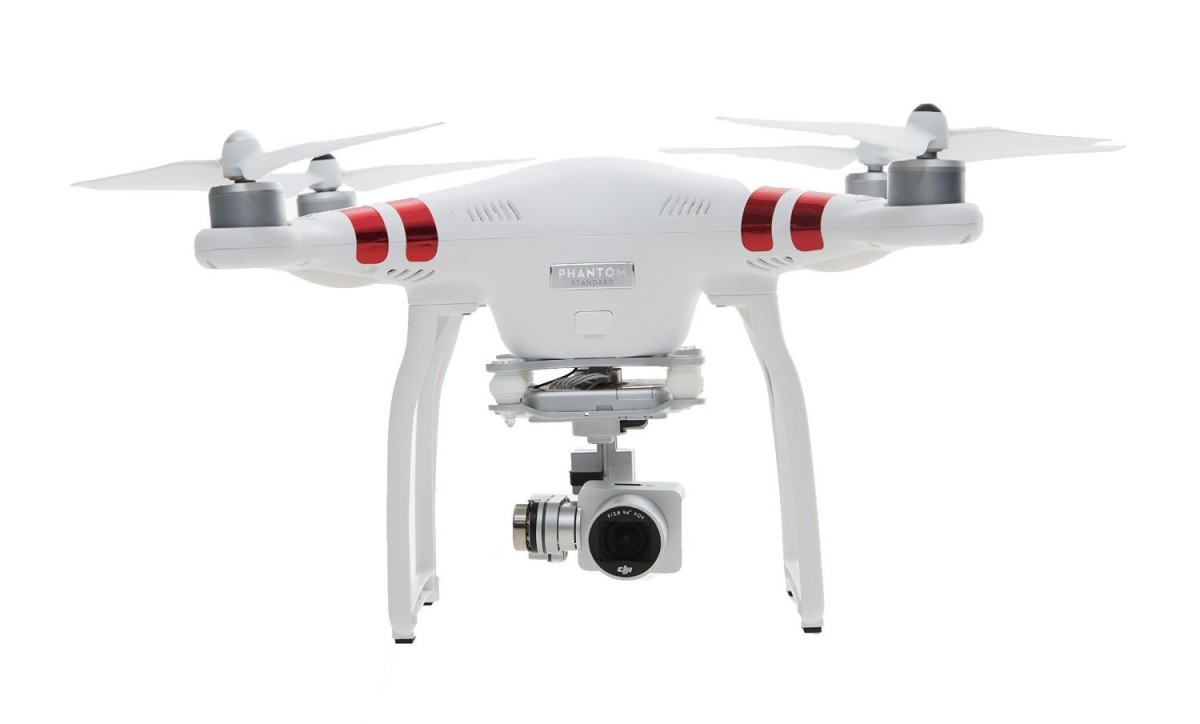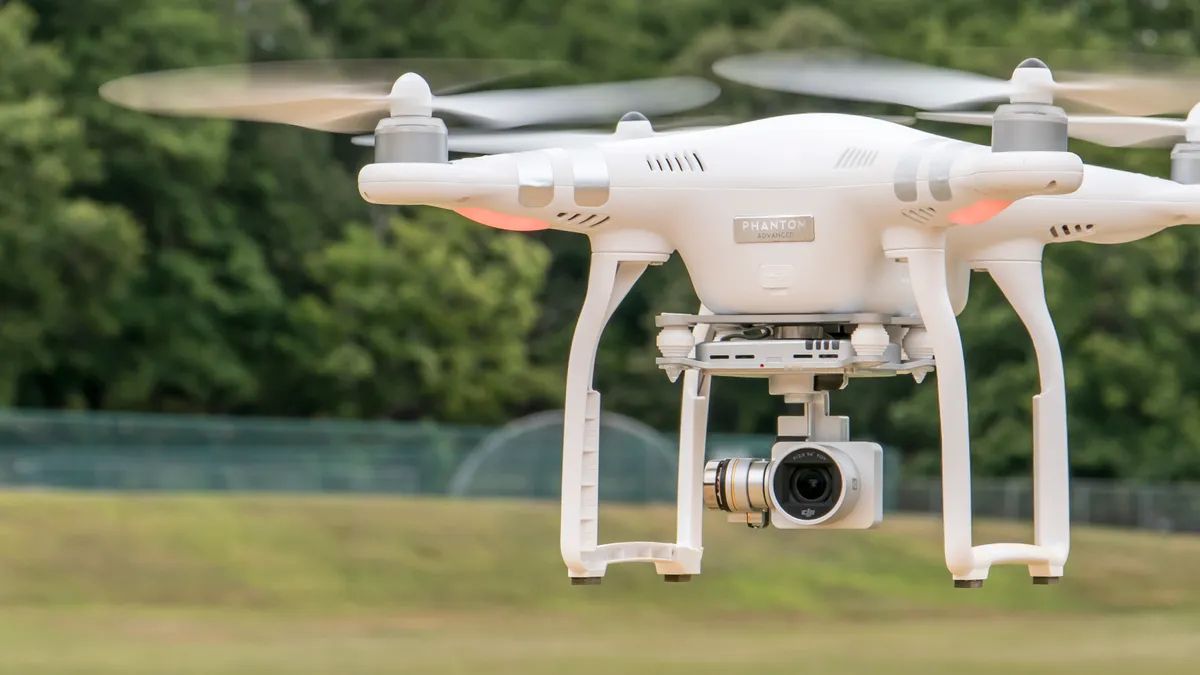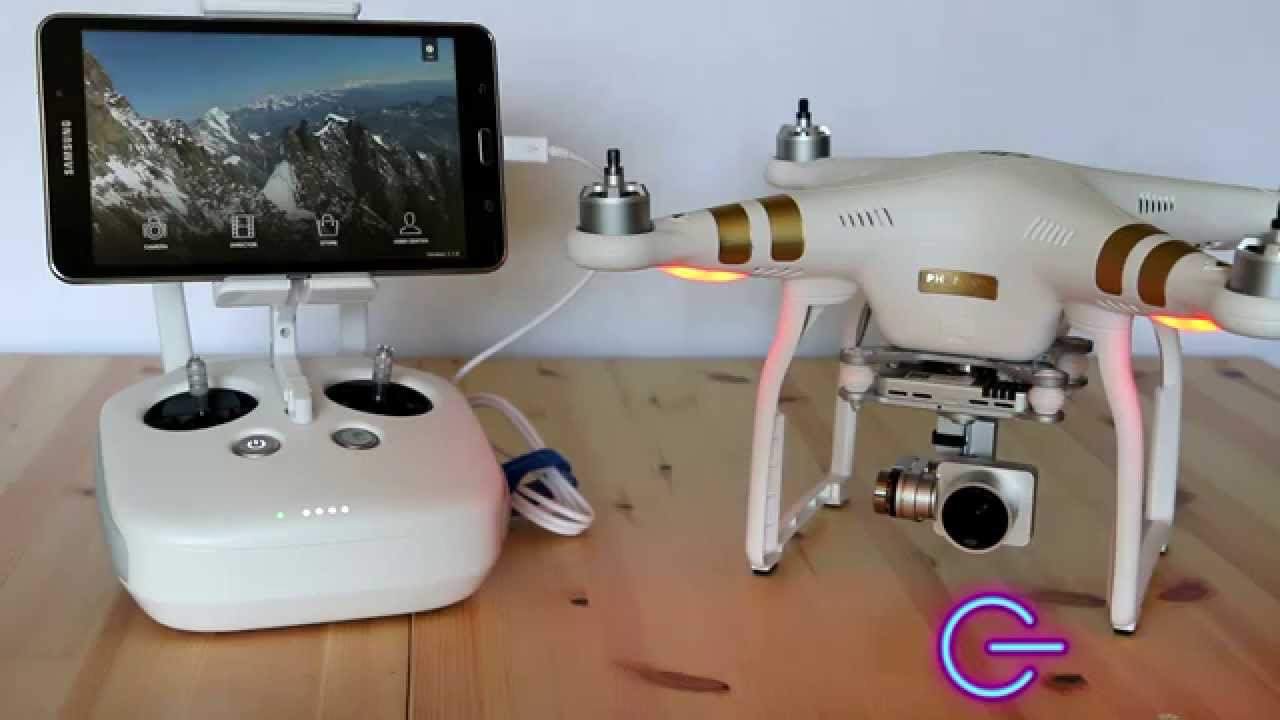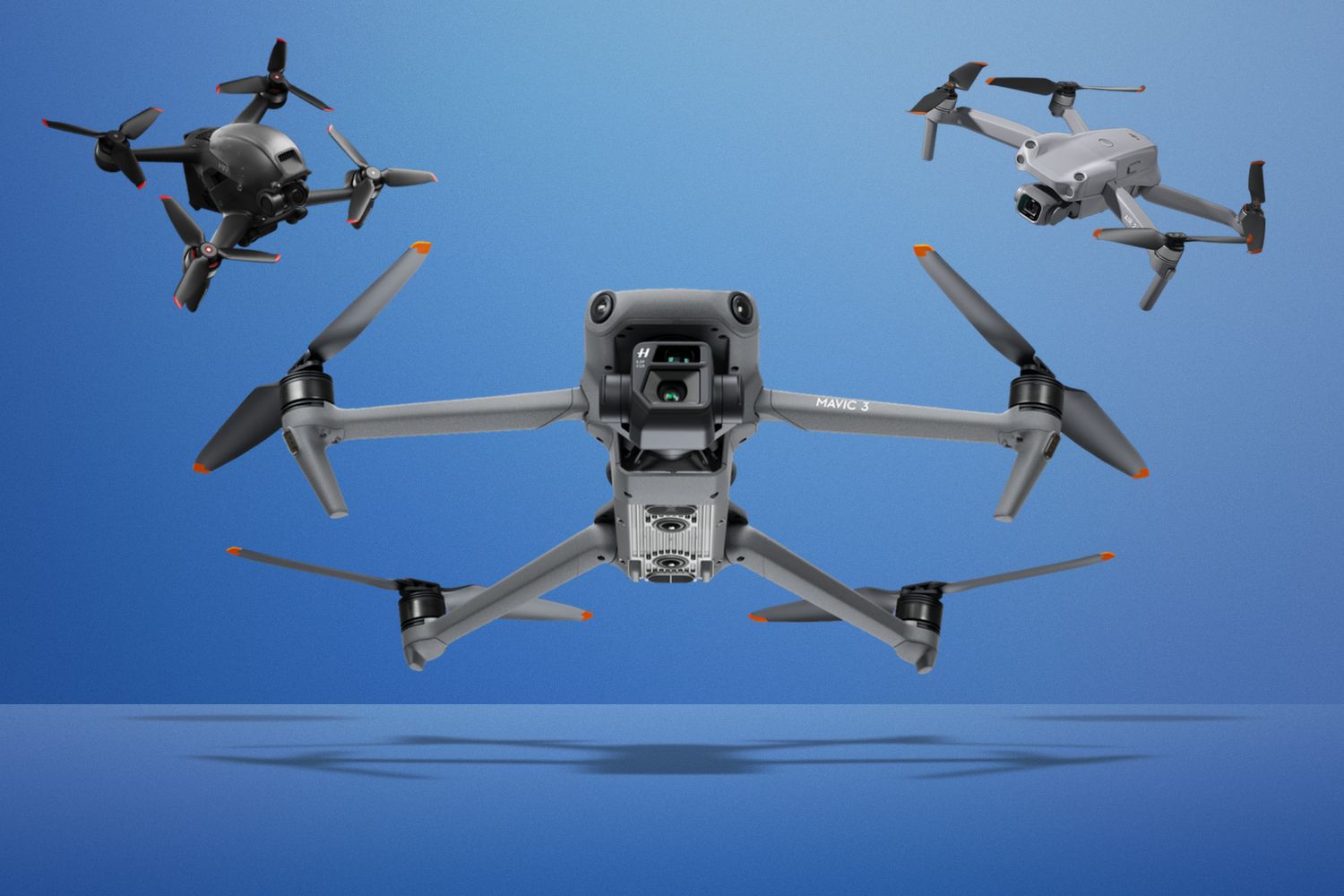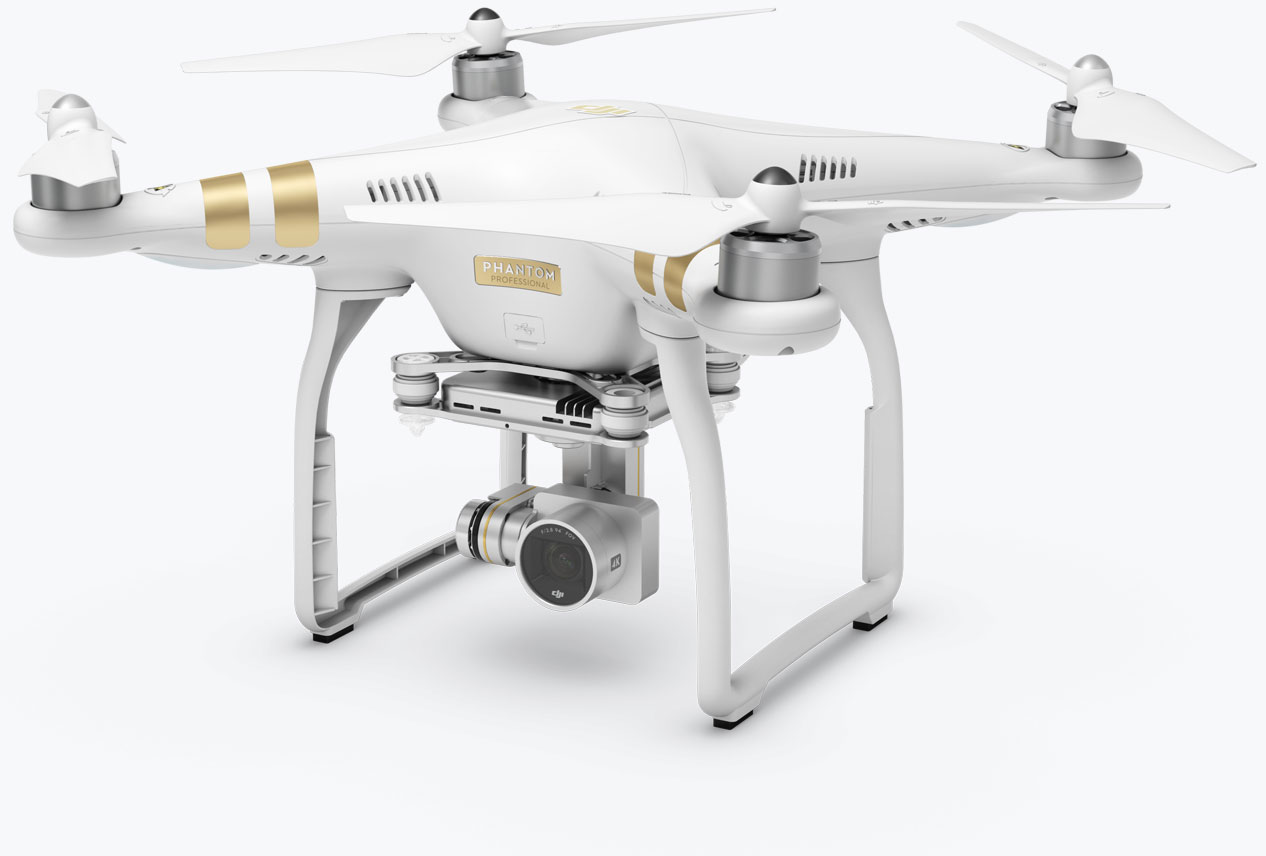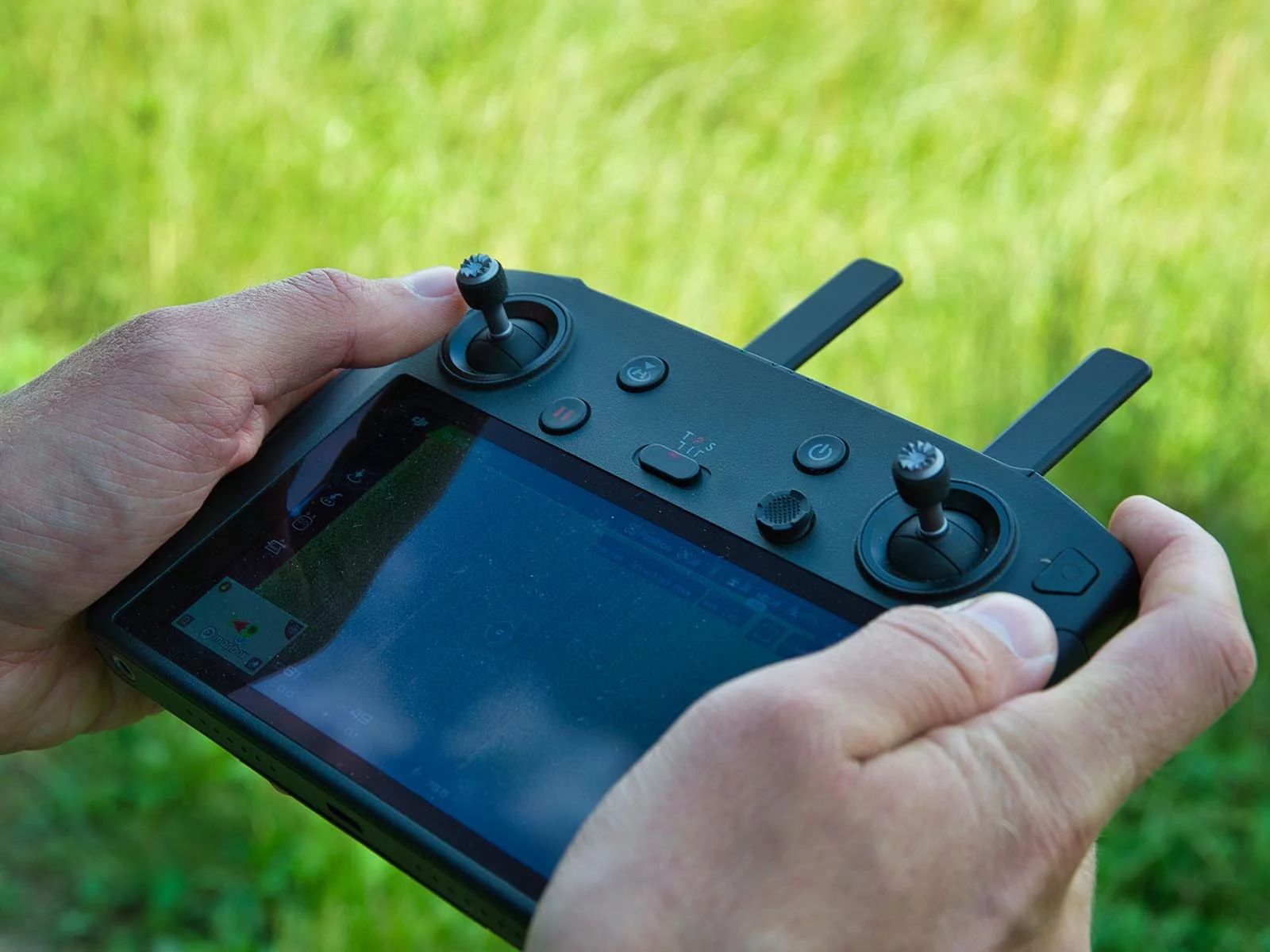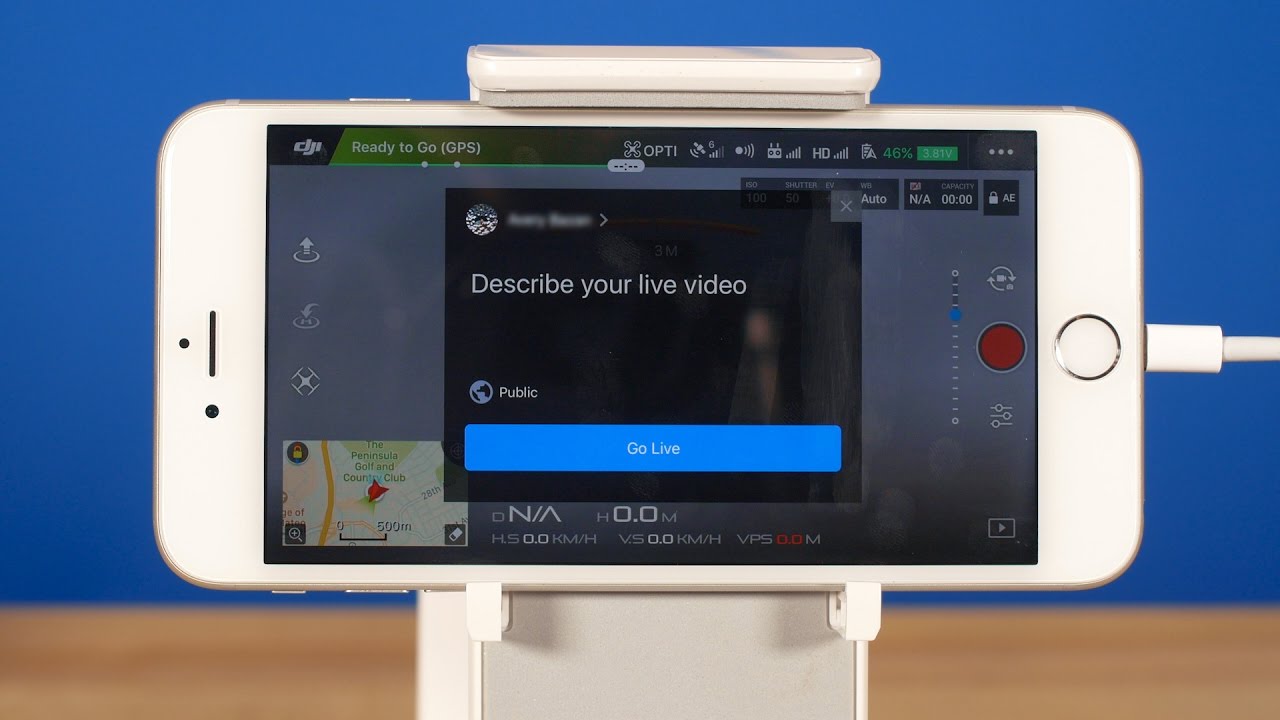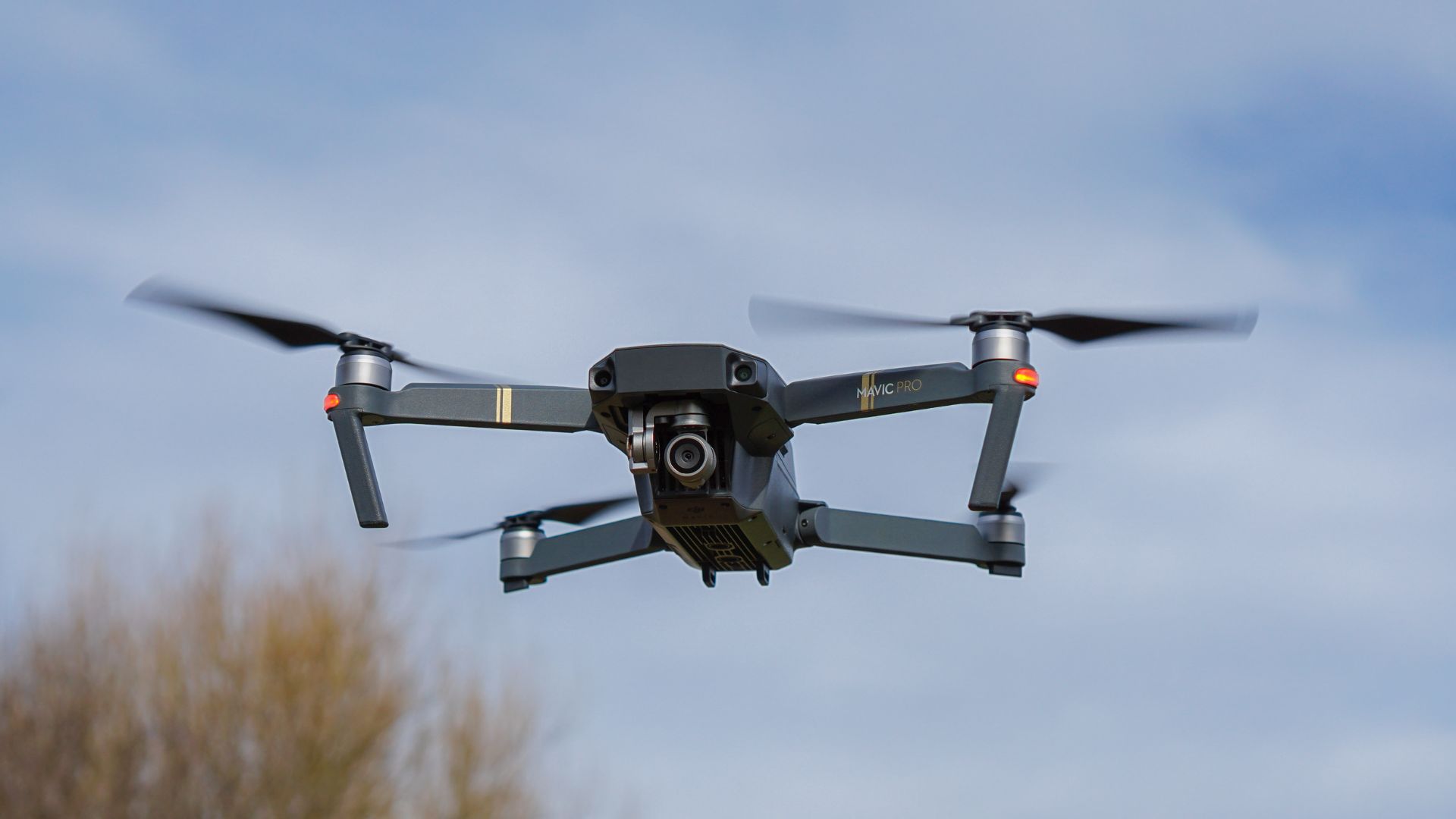Introduction
Welcome to the world of aerial photography and videography with the DJI Phantom 3 Professional. Whether you are a professional photographer or just a hobbyist, this powerful drone will take your creativity to new heights. With its advanced features and capabilities, capturing breathtaking footage and stunning photographs has never been easier.
The DJI Phantom 3 Professional is designed to provide stable and smooth flight experiences, allowing you to navigate the skies with precision and confidence. Equipped with a high-resolution camera and intelligent flight modes, this drone offers endless possibilities for capturing unique and captivating aerial shots.
In this comprehensive guide, we will walk you through everything you need to know to maximize your experience with the DJI Phantom 3 Professional. From the basics of getting started to advanced flying techniques and capturing stunning aerial footage, we’ve got you covered.
Whether you are a beginner or have some experience with drones, this guide will help you navigate through the settings, controls, and flight modes of the DJI Phantom 3 Professional. We’ll provide you with the essential tips and tricks to enhance your skills and make the most out of your drone.
It’s important to note that while the DJI Phantom 3 Professional is a powerful and reliable drone, it is essential to always prioritize safety when operating it. Understanding the basics of pre-flight checks, safe takeoffs and landings, and responsible flying practices will ensure your drone experiences are enjoyable and accident-free.
So, buckle up and get ready for an exhilarating journey as we explore the world of DJI Phantom 3 Professional. With the knowledge and skills gained from this guide, you’ll be able to unlock your creative potential and capture stunning aerial images and videos that will leave your audience in awe.
Getting to know your DJI Phantom 3 Professional
The DJI Phantom 3 Professional is a remarkable drone that combines cutting-edge technology with user-friendly controls. Before you take to the skies, it’s important to familiarize yourself with the different components and features of this powerful aerial gadget.
At the heart of the DJI Phantom 3 Professional is its intelligent flight system, which provides enhanced stability and precise control. The drone utilizes GPS and GLONASS satellite positioning systems to maintain an accurate position in the air. This means you can focus on capturing stunning footage without worrying about manual corrections.
The camera on the DJI Phantom 3 Professional is a game-changer. It features a 12-megapixel sensor capable of capturing 4K Ultra HD videos and stunning aerial photographs. The camera is mounted on a three-axis gimbal, which provides smooth and stable shots even when the drone is in motion.
The remote controller is a critical component of your DJI Phantom 3 Professional experience. It features a comfortable and ergonomic design with intuitive controls. The controller connects to your drone via radio frequency, allowing you to control the drone’s flight, camera settings, and other features effortlessly.
One of the standout features of the DJI Phantom 3 Professional is its live HD video streaming capability. The drone can transmit a live feed of its camera’s view to your mobile device or tablet through the DJI GO app. This real-time video feedback allows you to frame your shots accurately and make adjustments on the fly.
The DJI GO app is a powerful companion for your DJI Phantom 3 Professional. It provides an array of features, including intelligent flight modes, camera settings, and access to firmware updates. The app also allows you to review and edit your footage, making it a versatile tool for both capturing and post-processing your aerial shots.
In summary, the DJI Phantom 3 Professional is a well-designed and feature-packed drone. Its intelligent flight system, high-quality camera, user-friendly remote controller, live video streaming, and the DJI GO app combine to create an unbeatable aerial photography and videography experience. With this drone in your hands, the sky is no longer the limit for your creative vision.
Pre-flight checks and preparations
Before taking your DJI Phantom 3 Professional for a spin, it’s vital to perform a series of pre-flight checks to ensure the safety and success of your flight. Here are the essential steps to follow:
1. Check the battery: Start by checking the battery levels of both the drone and the remote controller. Make sure they are adequately charged to avoid unexpected power loss during flight. It’s recommended to have spare batteries on hand for extended flight sessions.
2. Inspect the drone: Examine the aircraft for any signs of damage or wear. Check the propellers for any cracks or bending, and ensure they are securely fastened. Inspect the landing gear, arms, and body of the drone for any loose connections or abnormalities.
3. Update firmware: Connect your DJI Phantom 3 Professional to the DJI GO app and check for any available firmware updates. Keeping your drone’s software up to date ensures optimal performance and access to the latest features and improvements.
4. Check the environment: Before takeoff, assess the flying area for any potential obstacles such as trees, power lines, or buildings. Ensure you are complying with the local regulations and guidelines regarding drone use, including any required permits or restrictions.
5. Calibrate the compass: Calibrating the compass is crucial for accurate navigation and flight stability. Follow the instructions provided by the DJI GO app to perform the compass calibration process in an open area away from any magnetic interference.
6. Set the home point: Designate a safe landing spot as the home point. This way, if the drone loses connection or its battery is low, it will automatically return to the home point for a safe landing. Ensure that the home point is clear of obstacles and provides a stable landing area.
7. Perform a test flight: Before embarking on a full-fledged aerial journey, start with a short test flight to ensure all systems are functioning correctly. Take off and hover at a low altitude to check the responsiveness of the controls, stability of the drone, and the quality of the video feed.
Following these pre-flight checks and preparations will not only prevent unforeseen issues during your flight but also ensure that you have a safe and enjoyable experience with your DJI Phantom 3 Professional. Take the time to familiarize yourself with these steps, and you’ll be ready to explore the skies with confidence.
Basic controls and settings
Understanding the basic controls and settings of your DJI Phantom 3 Professional is crucial for a smooth and enjoyable flying experience. Here’s a breakdown of the essential controls and settings you need to know:
1. Powering on and off: To power on the drone, press the power button once and then press and hold it until the lights on the drone start flashing. To power off the drone, press and hold the power button until the lights turn off completely.
2. Throttle control: The left joystick on the remote controller is used to control the throttle, which determines the altitude of the drone. Pushing the joystick upward increases the throttle, causing the drone to ascend, while pulling it downward decreases the throttle, causing the drone to descend.
3. Directional control: The right joystick on the remote controller is used to control the drone’s direction. Pushing the joystick to the right or left rotates the drone in that direction, while pushing it forward or backward moves the drone forward or backward, respectively.
4. Camera control: The camera tilt can be controlled using the scroll wheel on the top right corner of the remote controller. Tilting the scroll wheel forward or backward adjusts the camera angle, allowing you to capture different perspectives during flight.
5. Intelligent flight modes: The DJI Phantom 3 Professional offers various intelligent flight modes to enhance your flying experience. These modes include Follow Me, Waypoints, Point of Interest, and Course Lock, among others. Familiarize yourself with these modes and learn how to activate and utilize them through the DJI GO app.
6. Camera settings: The DJI GO app allows you to access and adjust various camera settings, including resolution, frame rate, exposure, white balance, and more. Experiment with these settings to achieve the desired look and feel for your aerial footage.
7. Return-to-Home (RTH) function: The DJI Phantom 3 Professional is equipped with a smart RTH function that ensures the drone returns to its takeoff point automatically. Familiarize yourself with this function and the different scenarios in which it may be triggered, such as low battery or lost connection.
It’s essential to practice and become familiar with these basic controls and settings before embarking on more complex flying and filming tasks. Take your time to master the controls, understand the different modes and settings, and gradually explore the full potential of your DJI Phantom 3 Professional.
Taking off and landing safely
Taking off and landing your DJI Phantom 3 Professional safely is key to a successful and incident-free flight. Here are some important guidelines to follow:
1. Find a suitable takeoff and landing area: Look for an open space that is clear of any obstacles, such as trees, buildings, or power lines. Ensure that the ground is flat and free from debris to minimize the risk of propeller damage during takeoff and landing.
2. Power on the drone and remote controller: Power on your DJI Phantom 3 Professional by following the manufacturer’s instructions. Make sure the drone and remote controller are properly connected and have a strong signal before proceeding.
3. Pre-flight check: Perform a quick pre-flight check to ensure everything is in working order. Verify that the battery is charged, the propellers are securely fastened, and the camera is functioning correctly. Also, confirm that the GPS and compass signals are strong and stable.
4. Takeoff sequence: To take off, push the throttle joystick gently upward until the drone lifts off the ground. Maintain a slow and steady ascent to avoid any sudden movements or instability. Keep an eye on the altitude and adjust the throttle accordingly to maintain a comfortable flying height.
5. Hover for stabilization: Once the drone is airborne, let it hover in place for a few moments to stabilize its position. Check the drone’s altitude, stability, and the quality of the video feed to ensure everything is in order before proceeding with your flight.
6. Landing procedure: When it’s time to land, find a clear and suitable landing spot within your drone’s range. Slowly lower the throttle to descend the drone gradually. Aim for a smooth and controlled landing by reducing the throttle just enough to bring the drone down gently. Avoid abrupt stops or touching down too hard.
7. Power off safely: After landing, power off the drone and remote controller. Make sure the propellers have come to a complete stop before handling the drone. Double-check that all systems are shut down properly to prevent any accidental startup.
Remember, practice makes perfect. It’s crucial to practice takeoffs and landings in a safe and controlled environment to build your confidence and proficiency. With time and experience, you’ll be able to perform smooth and precise takeoffs and landings with ease.
Mastering the flight modes
The DJI Phantom 3 Professional offers a range of intelligent flight modes that can take your drone flying experience to the next level. Each flight mode serves a specific purpose, providing you with enhanced capabilities and creative possibilities. Here are some of the key flight modes to master:
1. Follow Me: In this mode, the drone tracks and follows your movement, allowing you to capture dynamic footage while remaining hands-free. This is especially useful for capturing action sports or outdoor activities where you are the subject of the shot.
2. Waypoints: Waypoints mode enables you to pre-plan a flight path by selecting specific GPS coordinates on the map. Once you activate this mode, your drone will autonomously fly along the designated route, allowing you to focus on capturing the perfect shot.
3. Point of Interest: With Point of Interest mode, you can select a specific object or location around which the drone will automatically orbit. This mode is great for capturing impressive aerial shots of landmarks or scenic landscapes, as the drone will maintain a consistent distance and angle from the subject.
4. Course Lock: Course Lock mode allows you to lock the drone’s current heading, regardless of its actual orientation. This means that no matter how the drone is turned during flight, it will maintain its set course, making it easier to capture shots that require smooth and consistent movement in a specific direction.
5. Home Lock: In Home Lock mode, the controls of the drone are relative to its takeoff point, regardless of its current position. This is particularly helpful if you lose visual orientation of the drone during flight or if you want to bring it back to the home point without worrying about its actual direction.
It’s important to thoroughly understand each flight mode and practice using them in open areas free of obstacles. Familiarize yourself with the controls and settings required for each mode through the DJI GO app. Take your time to experiment with different flight modes and consider incorporating them into your aerial photography and videography projects for added creativity and versatility.
Remember, while flight modes can automate certain aspects of your flight, it’s crucial to remain attentive and cautious during the flight. Always maintain situational awareness and be prepared to manually take control of the drone if needed.
Flying tips and techniques
Flying a DJI Phantom 3 Professional drone can be an exhilarating and rewarding experience. To help you make the most of your flights and capture stunning aerial footage, here are some valuable tips and techniques:
1. Start with beginner mode: If you are new to flying drones, it’s a good idea to begin in beginner mode. This mode limits the drone’s speed and responsiveness, making it easier to handle and reducing the risk of accidents. As you gain more confidence and experience, you can gradually increase the drone’s agility by switching to advanced flight modes.
2. Practice in open areas: When you are starting out, choose open areas with plenty of space to practice flying. This will give you more room to maneuver and reduce the chances of colliding with obstacles. Avoid congested areas, crowded parks, or places with heavy foot traffic.
3. Fly in favorable weather conditions: It’s best to fly your drone in calm weather conditions with minimal wind. Strong winds can affect the stability and control of the drone, making it more challenging to fly and compromising the quality of your footage. Check the weather forecast before heading out to ensure optimal flying conditions.
4. Use the gimbal stabilization: The DJI Phantom 3 Professional is equipped with a three-axis gimbal that stabilizes the camera for smooth and steady shots. Take advantage of this feature by avoiding sudden and jerky movements. Fly the drone steadily and smoothly to ensure your shots are crisp and professional-looking.
5. Plan your shots: Before taking off, have an idea of the shots you want to capture. Plan your flight path and consider the composition, framing, and subject of your shots. By doing so, you’ll be able to maximize your flight time and come back with more visually appealing footage.
6. Experiment with camera angles and movements: Don’t be afraid to experiment with different camera angles and movements during flight. Try capturing footage from different heights, angles, and perspectives to add variety and visual interest to your recordings. Fly around your subject, move the camera up and down, and explore different flight paths to unlock the full potential of your shots.
7. Fly responsibly and respect privacy: Always follow local regulations and guidelines regarding drone usage. Respect people’s privacy and avoid flying over private properties or restricted areas. Be mindful of your surroundings and the impact your drone may have in certain environments.
By following these flying tips and techniques, you’ll be able to enhance your flying skills, capture breathtaking aerial footage, and ensure a safe and enjoyable experience with your DJI Phantom 3 Professional.
Capturing stunning aerial footage
The DJI Phantom 3 Professional is a powerful tool for capturing breathtaking aerial footage. To make the most of your drone’s capabilities and achieve stunning results, here are some tips and techniques to consider:
1. Plan your shots: Before taking off, have a clear vision of the shots you want to capture. Consider the location, subject, and overall composition. This will help you frame your shots effectively and ensure you capture the desired footage.
2. Use manual camera settings: While the DJI Phantom 3 Professional offers automatic camera settings, using manual controls can give you more control over exposure, shutter speed, and ISO. Adjusting these settings according to the lighting conditions and desired artistic effect can elevate the quality and impact of your footage.
3. Experiment with different camera angles: Don’t limit yourself to capturing footage from eye-level. Explore different camera angles to add dynamism and interest to your shots. Fly higher to capture sweeping aerial panoramas, or fly lower for a unique and immersive perspective.
4. Utilize the gimbal stabilization: Take advantage of the drone’s three-axis gimbal stabilization system to achieve smooth and stable footage. The gimbal compensates for the drone’s movements, ensuring your shots are steady and professional-looking. Keep your movements fluid and avoid sudden jerks to maximize the effectiveness of the gimbal.
5. Create cinematic movements: Experiment with various flight movements to create cinematic shots. Try capturing slow and controlled camera pans, tilts, and dolly shots to add a professional cinematic feel to your footage. Practice flying smoothly and gradually to achieve seamless and visually appealing movements.
6. Consider the rule of thirds: Apply the rule of thirds to compose your shots. Imagine dividing your frame into nine equal parts using two horizontal lines and two vertical lines. Place important visual elements along these lines or at their intersections to create a more visually pleasing and balanced composition.
7. Incorporate motion dynamics: Use the drone’s ability to maneuver in the air to incorporate dynamic movement into your footage. Experiment with flying towards or away from your subject, circling around it, or creating interesting flyovers. These dynamic shots can add energy and excitement to your aerial footage.
8. Edit and enhance your footage: Once you’ve captured your aerial footage, utilize video editing software to enhance your shots. Adjust color grading, add transitions, and overlays, and include music or sound effects to create a captivating final product that showcases the beauty and scale of your aerial imagery.
By following these tips and techniques, you can capture stunning aerial footage that will leave viewers amazed and captivated. Push the boundaries of your creativity, experiment with different approaches, and continue to refine your skills to take your aerial videography to new heights.
Troubleshooting common issues
While the DJI Phantom 3 Professional is a reliable and advanced drone, occasional issues can arise during flight. Here are some common issues you may encounter and troubleshooting tips to resolve them:
1. Poor GPS signal: If you experience a weak GPS signal, it can affect flight stability and the accuracy of the drone’s position. Ensure you are flying in an open area without obstructions that may disrupt the signal. If the issue persists, recalibrate the compass and GPS in an interference-free location.
2. Reduced flight time: If you notice a shorter flight time than usual, it could be due to various factors. Check the health of your drone’s batteries, ensure they are properly charged, and avoid flying in extreme temperature conditions, as it can affect battery performance. Consider purchasing additional batteries for longer flight sessions.
3. Connection issues: Loss of connection between the drone and the remote controller can occur at times. Ensure you have a clear line of sight between the two and that there is no interference from nearby objects or other wireless devices. Keep the remote controller fully charged and consider using a range extender to improve signal strength and stability.
4. Unstable footage: If you notice shaky or unstable footage, it may be due to improper flying techniques or issues with the drone’s gimbal. Practice flying smoothly and avoid sudden movements. Check that the gimbal is calibrated correctly and that the drone is set to the appropriate sensitivity settings for stable footage.
5. SD card errors: If you encounter issues with your SD card, such as corrupted files or formatting errors, try using a different SD card or formatting the existing one in the DJI GO app. Ensure you are using a high-quality, compatible SD card with the necessary write speed for recording high-resolution video.
6. Motor or propeller issues: If you notice any abnormal noises or vibrations coming from the drone, inspect the motors and propellers for damage or debris. Replace any damaged or worn-out propellers, ensuring they are securely fastened. Keep your motors clean and free from dust or debris to maintain optimal performance.
7. Firmware and software updates: Keeping your drone’s firmware and the DJI GO app up to date is essential for optimal performance and access to the latest features. Regularly check for updates and follow the instructions carefully when updating to avoid any compatibility issues or bugs.
If you encounter any other issues not covered here, consult the DJI Phantom 3 Professional user manual or reach out to DJI customer support for further assistance. Remember to fly responsibly, follow safety guidelines, and continuously monitor the performance of your drone to ensure a smooth and enjoyable flying experience.
Conclusion
In conclusion, the DJI Phantom 3 Professional is a remarkable drone that offers incredible capabilities for capturing stunning aerial footage and photographs. By familiarizing yourself with the various controls, settings, and flight modes, you can unlock the full potential of this powerful aerial tool.
From pre-flight checks and preparations to mastering flight modes and capturing breathtaking footage, this guide has provided you with valuable insights and tips to enhance your drone flying experience. Remember to always prioritize safety, practice in open areas, and follow local regulations and guidelines for responsible drone operation.
Whether you are a professional photographer, videographer, or simply a hobbyist passionate about aerial photography, the DJI Phantom 3 Professional offers endless possibilities for creative expression. From awe-inspiring aerial panoramas to dynamic action shots, this drone empowers you to explore new perspectives and capture moments that were once out of reach.
Continue to refine your flying skills, experiment with different camera angles and settings, and push the limits of your creativity. Embrace the technology and innovation of the DJI Phantom 3 Professional to create stunning, professional-grade aerial footage that will captivate and inspire your audience.
So, grab your drone, head out to a stunning location, and let your imagination soar as you capture stunning aerial footage with your DJI Phantom 3 Professional. With practice, patience, and a passion for storytelling, the sky is the limit for your creative potential.







